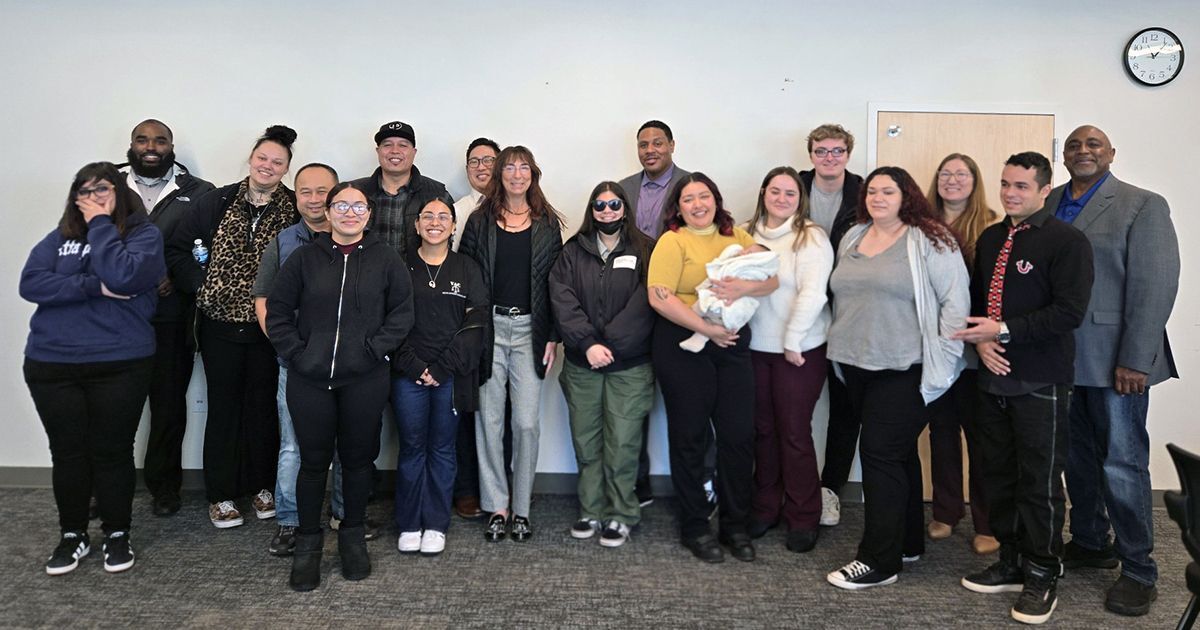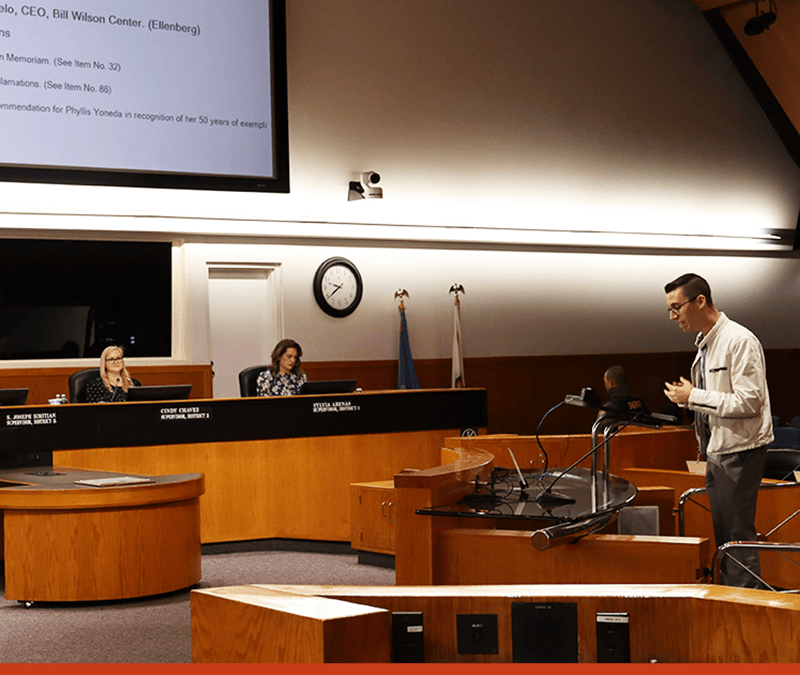Advocacy

BWC's youth council hosted a meeting with Santa Clara County Supervisor Susan Ellenberg and a newly formed youth coalition of young leaders in Santa Clara County to discuss key issues and actionable solutions for addressing youth homelessness in Santa Clara County and to advocate for policies and resources that prioritize homeless youth/young adults. Participants included representatives from Youth Impact Partnership, Youth Impact Council – Fresh Lifelines for Youth, Youth Action Board – Santa Clara County Continuum of Care, Youth Liberation Movement, AACI, Pacific Clinics, and San Jose Conservation Corps+Charter School.
At Bill Wilson Center, we believe in engaging with our communities and elected officials to support systems change that ends youth and young adult homelessness, and improves equity and justice for youth and families.
In order to achieve this goal, we want to engage our community of volunteers, partners, donors, clients and stakeholders in raising our collective voice to make change. Below is a list of our current top policy priorities, as well as links with additional information and resources.
We hope you will join us and take action to make change in our communities.
Governmental Advocacy Opportunities
Expanding Mental Health Education in Schools (authored by Senator Susan Rubio)
Behavioral health challenges among youth are worsening, as highlighted by a recent state Legislative Analyst’s Office report showing a 30% increase in California’s young adults (ages 15-44) mortality rate from 2019-2023, with fatal drug overdoses accounting for 60% of this rise. Schools are a vital setting for equipping children and youth with tools to recognize and address mental health issues, yet many lack a structured approach to behavioral health education.
In 2022, there was a successful passage of SB 224 (Portantino) https://youthlaw.org (click under laws & policy section). Requiring middle and high schools offering health classes to include mental health education. In 2025, the hope is to expand on those efforts by advocating for mental health education to be offered at least once in elementary, middle, and high school.
Co-sponsor: National Alliance on Mental Health Illness (NAMI), National Center for Youth Law (NCYL),
The Children’s Partnership (TCP), and California Alliance https://www.cacfs.org
Creating flexibilities in Transitional Housing Placement Programs Housing Contracts
THPPs offer housing and services to former foster youth. Currently, 19 counties partner with THPP providers to successfully operate these programs by only following the CDSS licensing requirements, while other counties have more restrictive contracts that limit housing opportunities. These restrictions include limiting housing to either a single occupancy room, or in other cases a two-bedroom apartment. Removing these arbitrary restrictions will allow youth to move between counties, prevent unnecessary delays in accessing available program slots, and remove limitations on housing.
Proposing legislation that would mandate counties to follow the state manual requirements outlined in the CDSS Manual of Policies and Procedures Community Care Licensing Division Transitional Housing Placement Program Title 22 Division 6 Chapter 7 for THPPS.
Co-Sponsor: Good River Partners & California Alliance
Federal Housing Vouchers for Former Foster Youth in California
This resource provides county child welfare agencies and Public Housing Authorities with recommended best practices for local administration of special purpose Housing Choice Vouchers for former foster youth.
These vouchers are available through the Foster Youth to Independence (FYI) Initiative and the Family Unification Program (FUP). FYI/FUP vouchers are administered by the U.S. Department of Housing and Urban Development (HUD) to Public Housing Authorities which partner with Public Child Welfare Agencies. Eligible youth have left foster care or will leave within 90 days and are between ages 18-24 at the time of voucher issuance.
Challenges:
- Limited resources - PHAs may not have enough resources to provide the necessary case management and individualized attention.
- Finding landlords - Landlords may be reluctant to rent to former foster youth because they have no rental history.
- Documentation process- The documentation process may be too cumbersome, requiring documents upfront.
Recommendations:
- Increase funding: HUD can provide additional funding to cover move-in costs and supportive
services. - Extend voucher term: The voucher term could be extended beyond 36 months.
- Streamline documentation process: Youth could apply for vouchers with verification that they
have requested essential documents. - Outreach to landlords: HUD could outreach to property owners and real estate agencies to find
landlords willing to rent to former foster youth. - Provide landlord mediation: HUD could provide landlord mediation when issues arise.
- Provide financial incentives: HUD could provide financial incentives to landlords who rent to
former foster youth. (for more information)
Assembly Bill 49/Senate Bill 48 (Assemblymember Al Muratsuchi / Senate Majority Leader Lena
Gonzalez)
Assembly Bill (AB) 49 and Senate Bill (SB) 48 are California bills that protect students and families, and
ensure that all students have access to an education.
AB 49
- Prohibits school officials from allowing US Immigration and Customs Enforcement (ICE) officers to enter school grounds without a valid warrant, identification, and approval from the school district superintendent
- Requires local educational agencies to limit access to school facilities where students are not present if ICE officers meet the requirements
SB 48
- Blocks immigration enforcement actions near schools
- Protects school revenue that may be lost due to immigration enforcement threats
- Assures families that California schools will not cooperate with ICE officials on or near school campuses
FEDERAL
We have met with our members of Congress to advocate for the following appropriations:
- Reauthorizing the Runaway and Homeless Youth Act, and make $300m in FY24 appropriations
- Appropriating $800m for the Education for Homeless Children and Youth program
- Appropriating $100m for the Youth Homelessness Demonstration Program
- Appropriating $300m for the Emergency Solutions Grant program in FY24
These programs and funding sources have a direct impact in our region, and in communities throughout the United States.
For more information about these policy and funding requests, visit our partner, the National Network for Youth.
How to Take Action
To make change locally, speak during public comment at your local City Council meeting or during the Board of Supervisors meeting. Click here for tips on giving public comment during a City or County meeting.
To make change at the state level, call or email your representative. Click here to find your California State Senate and Assembly representatives.
To support change at the federal level, call or email your elected official. Click here to find your members of Congress.
For more information about how to support our policy work, please contact Deryk Clark, Director of Strategic Partnership & Advocacy, at dclark@billwilsoncenter.org or 408-850-8466

